
Perry
Digital midwife for perinatal empowerment and awareness
Project Type
MHealth App Competition Stage 2 of 3, Semi-finalist
Timeline
Nov 2023 - Present
Team
J. Abando, J. Suarez, A. Chen
Role
UX research, Ideation, Prototyping
Platform
Mobile
Background
Define problem space
Start
User research
This was the design challenge statement:
Develop a unique, standalone mobile health app catering to healthcare end users
This was the design thinking framework:
Research analysis
Ideation
Wireframing
Business report
End of Round 1
Executive Summary of Project
Insufficient perinatal care can lead to premature pregnancy, low birth weight, birth defects, and maternal and child mortality. In 2020, nearly 20,000 infants died in the United States, with South Carolina, reporting some of the highest rates. Insufficient knowledge of perinatal care, a lack of community, and disempowerment imposed on pregnant women have detrimental implications. To help smooth out bumps throughout pregnancy, Perry, the perinatal mobile app, offers immediate, personalized assistance for individuals at any stage of the perinatal process. By keeping awareness, education, and empowerment of pregnant women at the center of its design, Perry brings together human factors and ergonomics to become the digital midwife for their perinatal journey.
My Role
The components of this portfolio, including research, data visualization, graphics, and prototypes, have been developed and refined to showcase my expertise in design and design thinking.
My Responsibilities
Exploratory Research
Facilitation and Note-taking during User Interviews
Research Analysis
Ideation
Wireframing
Current responsibilities for semi-final round: Interactive Prototyping, further primary and secondary research, and further Usability Evaluations.
Tools I Used - Figma, FigJam, Miro, Indesign, Canva
Finding a gap 🤔
Problem Space
We began by asking a broad question, what gaps in healthcare are people in the U.S. facing?
Identifying a market gap, our objective was to develop a unique product. Opting for a strategy of generating a multitude of innovative ideas, we unearthed twenty possibilities:
Following extensive meetings, collaborative research, and hours of discussion, we narrowed down numerous possibilities to just one: The Epidemiology Tracker.
Seeking guidance, we consulted with our advisor, Dr. Furness, an infection control epidemiologist, and our professor. With guidance, we narrowed down our scope to:
predictive and preventative approach
bringing awareness, education and empowerment on diseases
Narrow the focus to South Carolina, the competition's origin, for a more targeted product.
Pivoting the direction 🔍
During in-depth research, we found some shocking facts that perked our concern and interest:
In 2020, nearly 20,000 infants died in the U.S., with South Carolina reporting some of the highest rates.
Birth defects affect one in 33 babies born in the U.S. each year.
Black babies are nearly 2.5 times more likely than white babies to die in the first year.
1-in-3 women do not receive early prenatal care.
There was an overarching theme of hurdles to proper, timely perinatal care, a lack of access to education, awareness, and empowerment of perinatal care for mothers.

💡The problem became clear
Between poor perinatal health, lack of education, and impersonal medical care, people experience a gap in reliable support during their pregnancy journey.
Secondary Research
Primary Research
What’s already out there? 🔍
We looked at other apps in the market to gather insights into the strengths and weaknesses to identify opportunities for our app:
Understanding the users 🗣️
To better understand our target users, our team conducted four semi-structured interviews. All participants were mothers who had recently given birth (within the last two years), one of whom is a perinatal social worker.
We asked questions with the goal of better understanding their perinatal experience, discovering their needs during this journey, and uncovering any pain points. Through these interviews, I discovered three key insights:
It was crucial to recognize that only one of our participants could offer insights into the challenges faced by underrepresented communities.
User Needs
Organizing findings into identify the needs
The focus was on solving issues that users may not be aware of yet. During our conversations, we explored the goals our users might have with our app, ones they might struggle to achieve effortlessly otherwise.
“As an expecting mom, I want to receive catered information addressing my concerns, so that I don’t have to wait weeks until my appointment and ultimately - be empowered by knowledge.“
“As a new mom, I want to discover a safe community near me, so that I can ease my loneliness and facilitate an exchange of resources among community members.”
“As a user, I want to monitor my health and gain insights into prenatal knowledge, so that I can take more control in my perinatal care without relying on inaccessible and impersonal external sources.”
Generating Ideas
Turning needs into ideas
We initiated a dialogue on key functionalities, and through an extensive review of our research on existing applications, coupled with an analysis of the pain points articulated by our participants, we successfully identified three pivotal features.
Going back to the problem statement:
“Between poor perinatal health, lack of education, and impersonal medical care, people experience a gap in reliable support during their pregnancy journey.”
-
Taking Control of One’s Health
Our research, including App Store reviews and user interviews, highlighted the importance of a contraction tracker for pregnant individuals. This tool, which logs the frequency, duration, and nature of contractions, helps distinguish Braxton-Hicks contractions (a normal part of pregnancy often mistaken for real labor) from actual labor. The tracker educates users on differentiating between true and false labor through tooltips and in-app articles.
Additionally, a timeline view enables users to retrospectively assess their contractions. Our app will also incorporate other health trackers, starting with resting heart rate and blood sugar levels, to aid in early detection of pregnancy-related health issues like preeclampsia and gestational diabetes. This integration with wearable devices can alert users to abnormal readings, encouraging them to seek medical advice.
-
Personalized assistance and education
The Journal Log feature in our app is designed to assist users in meticulously documenting their perinatal journey, including concerns, questions, and other pertinent observations. This structured journal, accessible in monthly, weekly, or daily formats, enables users to track crucial information for self-advocacy and prepare for medical appointments.
It not only allows for the logging of new entries and follow-ups on prior issues but also offers insights based on keyword detection. This proactive approach in organizing and summarizing topics like health, symptoms, diet, and queries for doctor's visits significantly alleviates stress and enhances preparedness for medical consultations.
-
Holistic health, community building, and empowerment
Our user interviews revealed that during pregnancy, individuals value support from both medical professionals and personal networks, particularly those who have experienced pregnancy. To facilitate this, our app, Perry, includes a feature for users to connect with other parents in their locality. It offers a communication tab and a Feed where users can post and interact on various pregnancy-related topics. Additionally, Perry allows users to create and attend local events, promoting in-person connections and support. This feature is designed to build a supportive community network, offering relatability and resources, which is especially beneficial when medical support is not readily accessible.
Wireframing ✍🏻
I wireframed the below screens of Journal and Community Feed utilizing components, auto layout, and a small set of design systems I created.
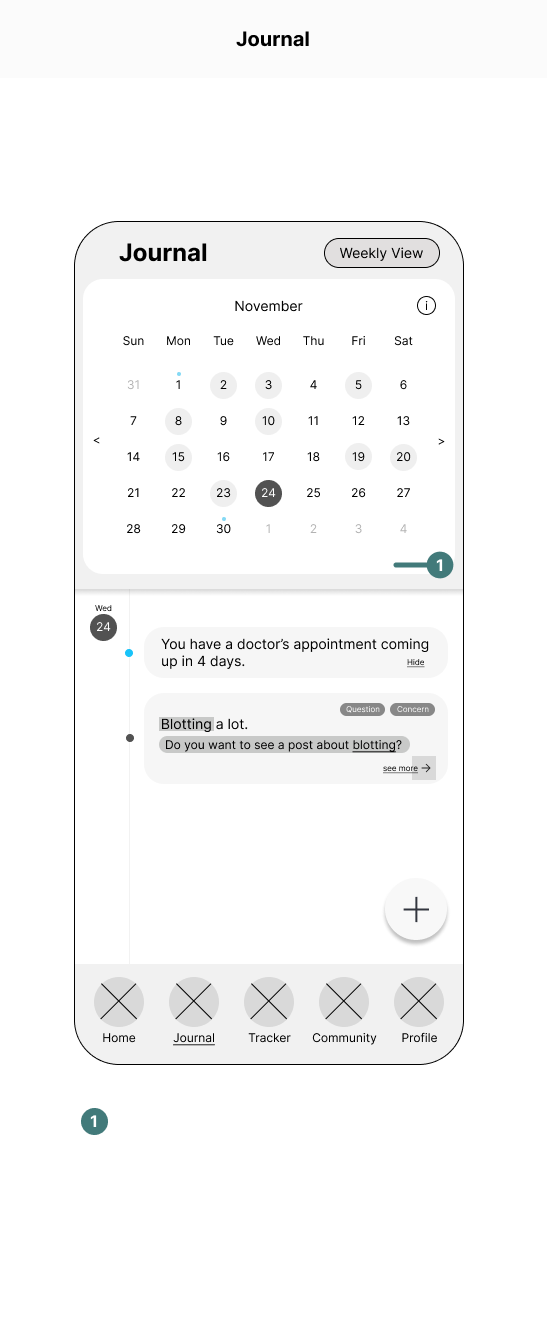
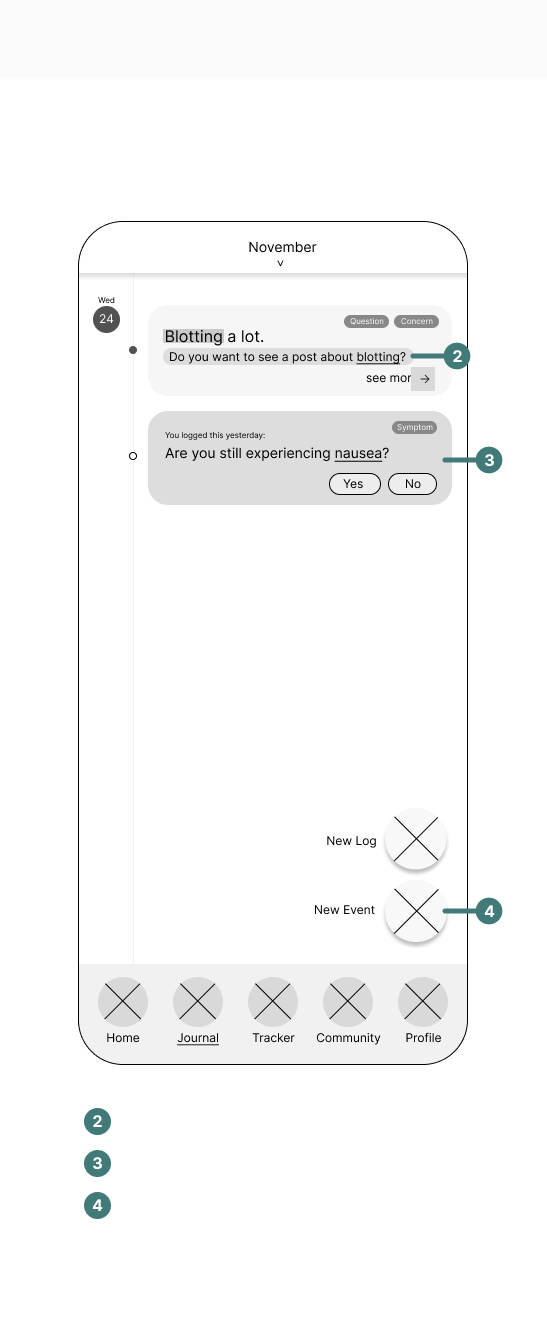
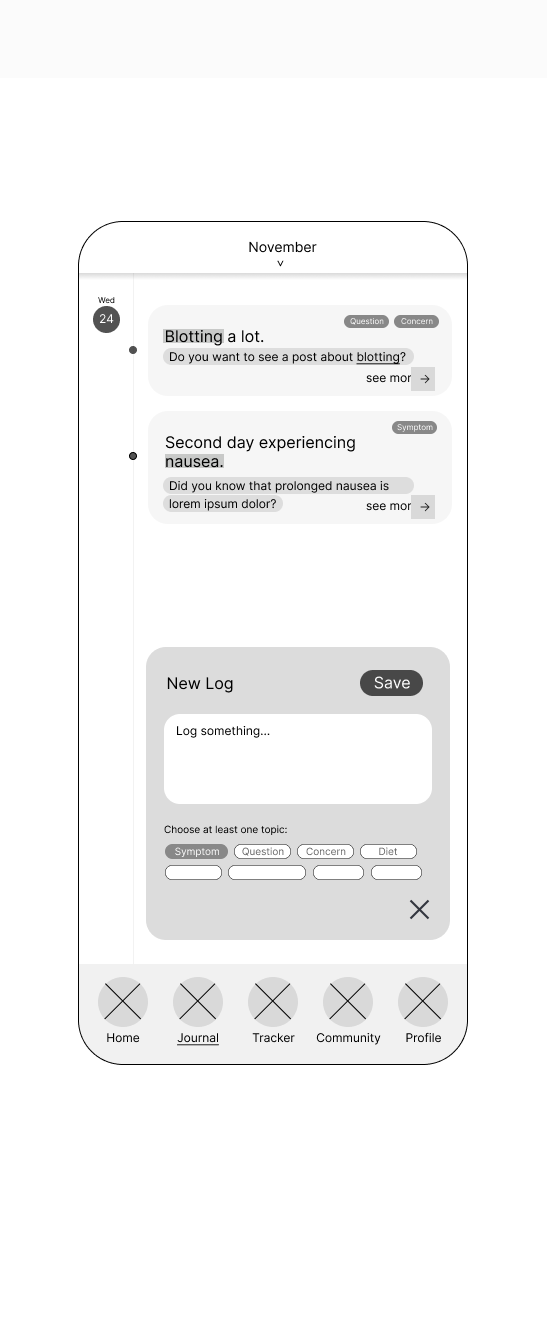
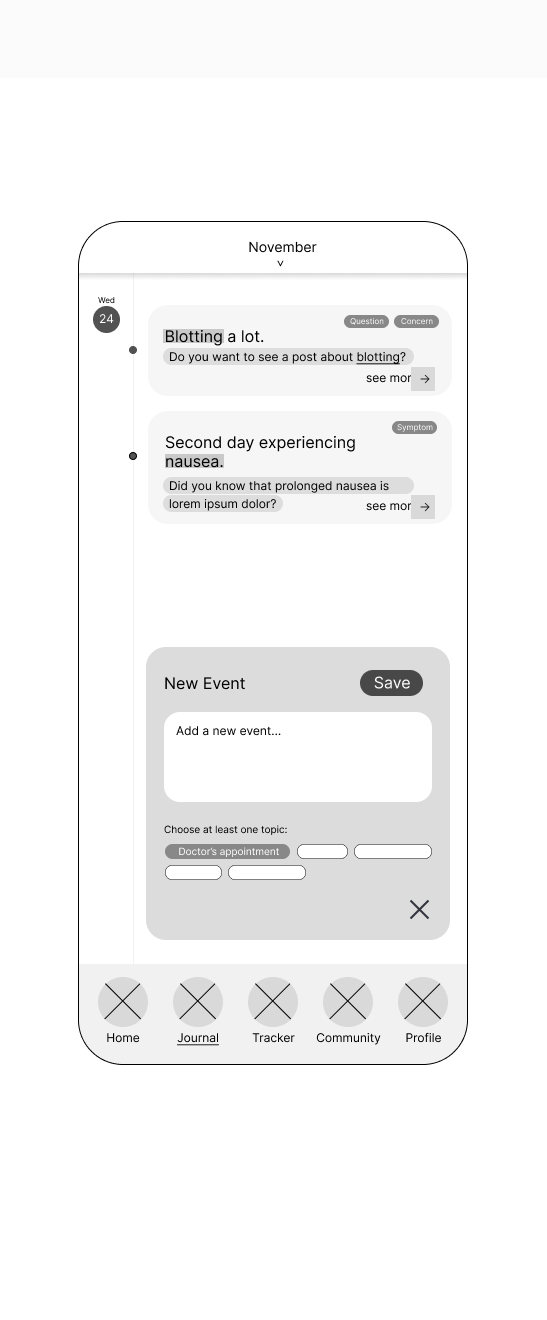
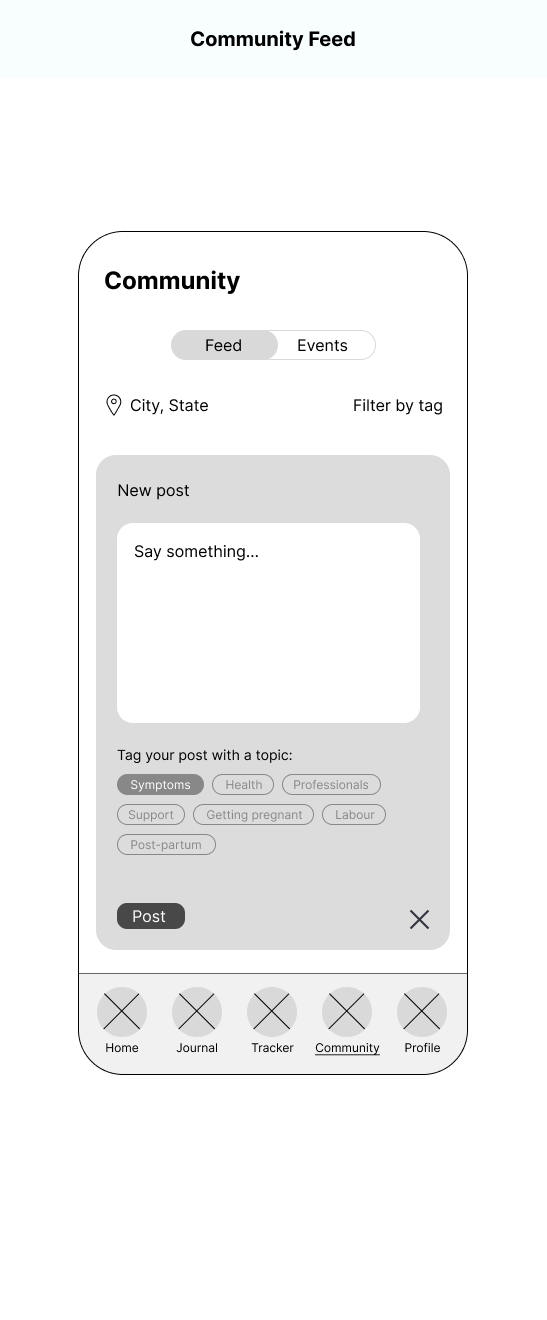
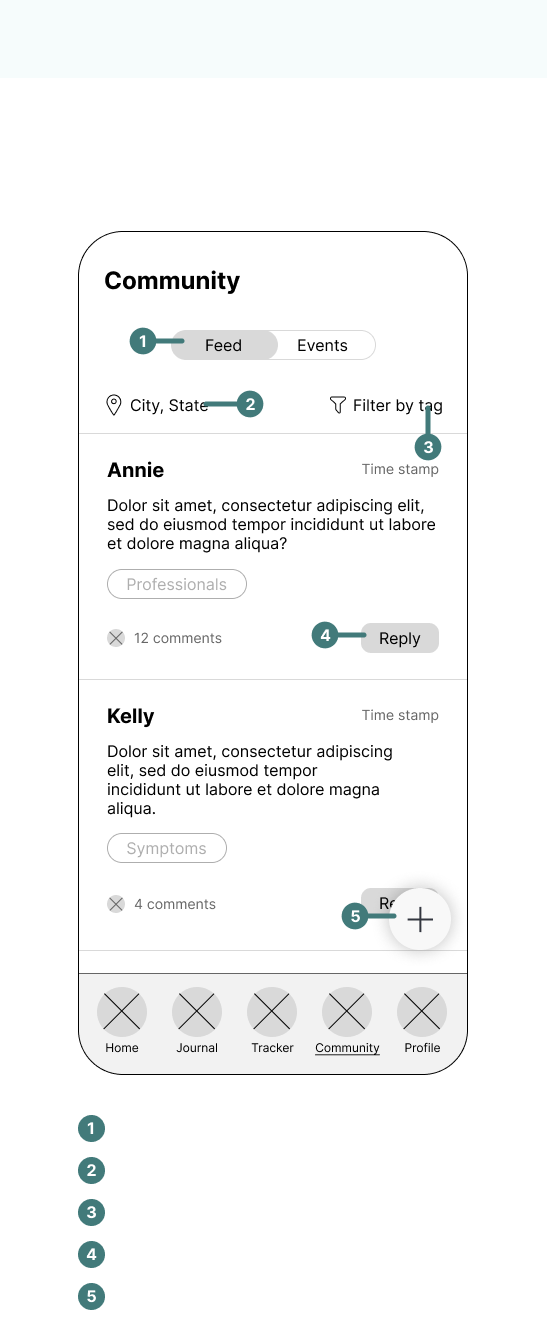
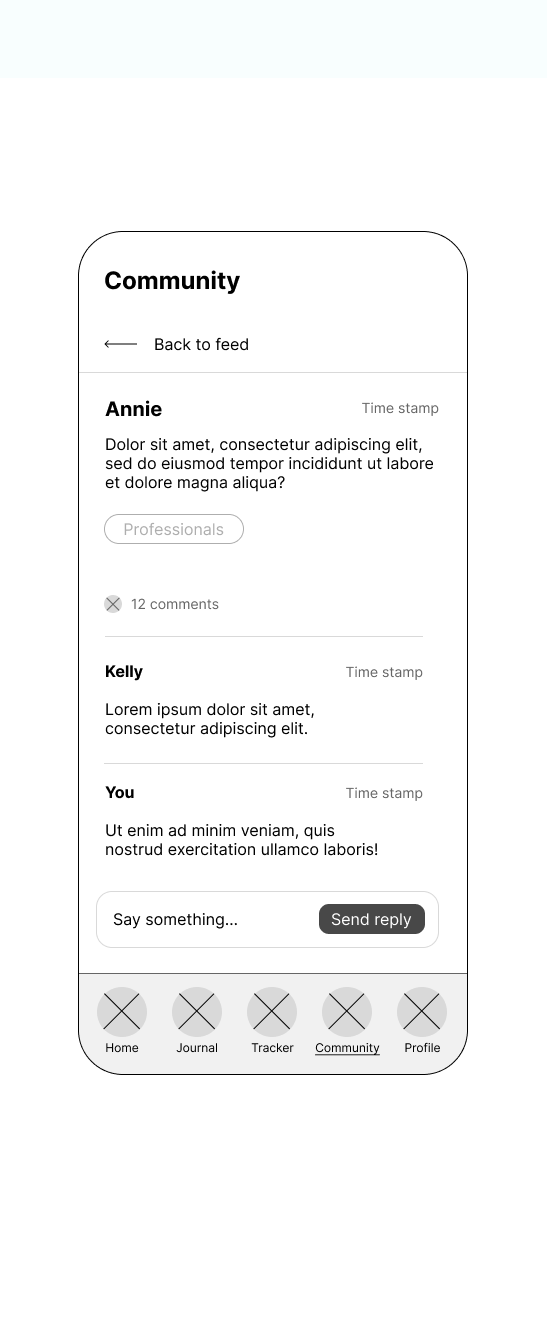
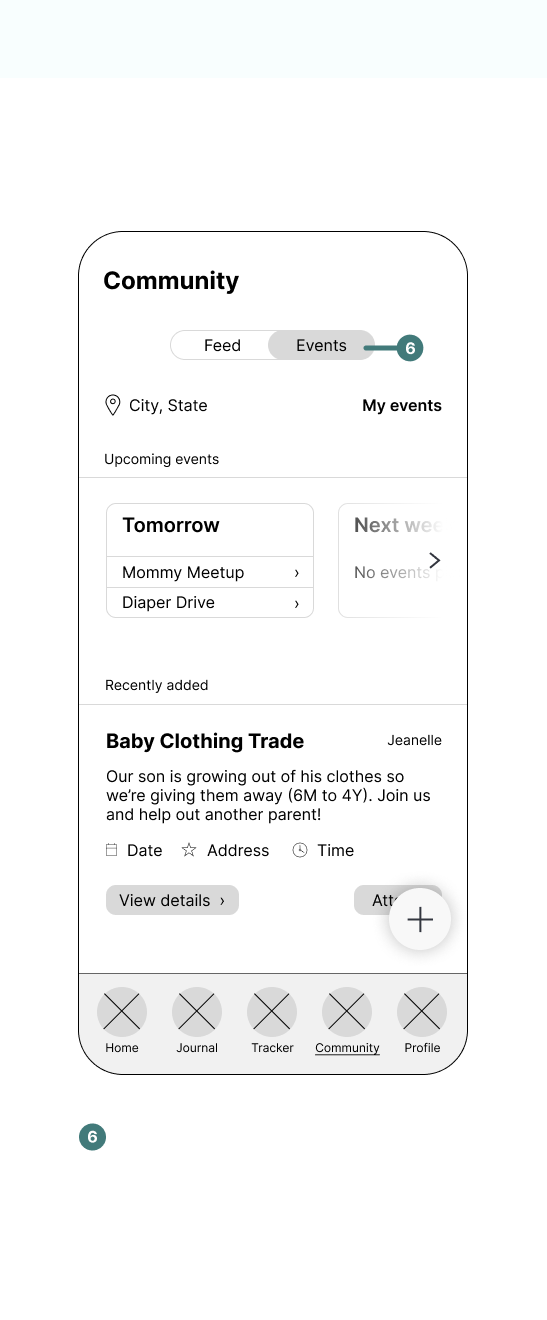
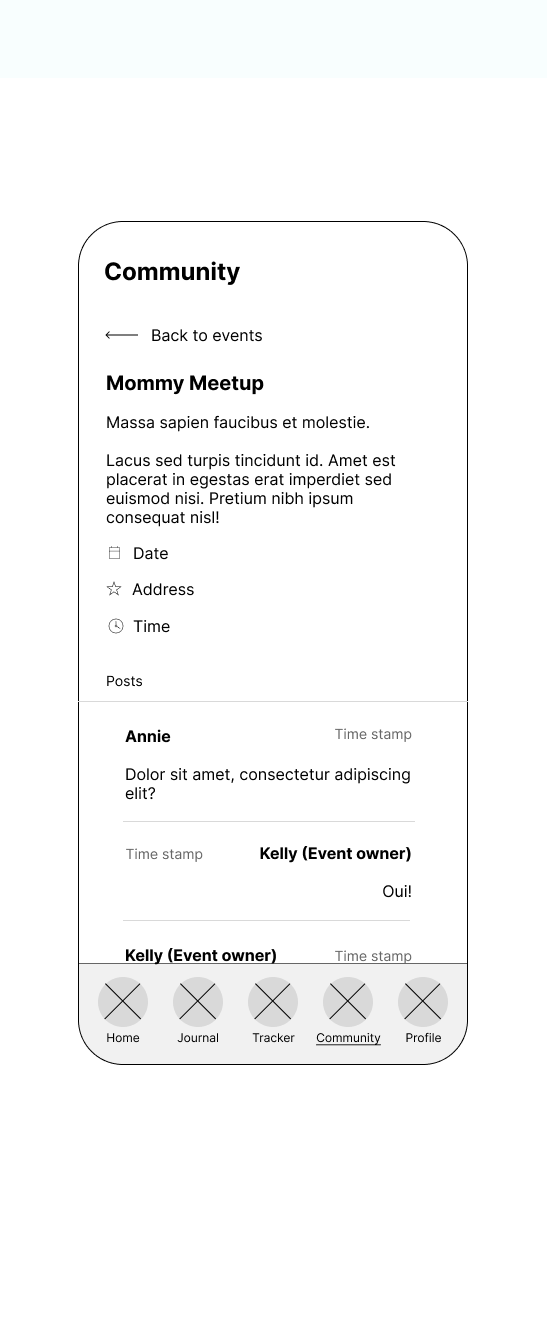
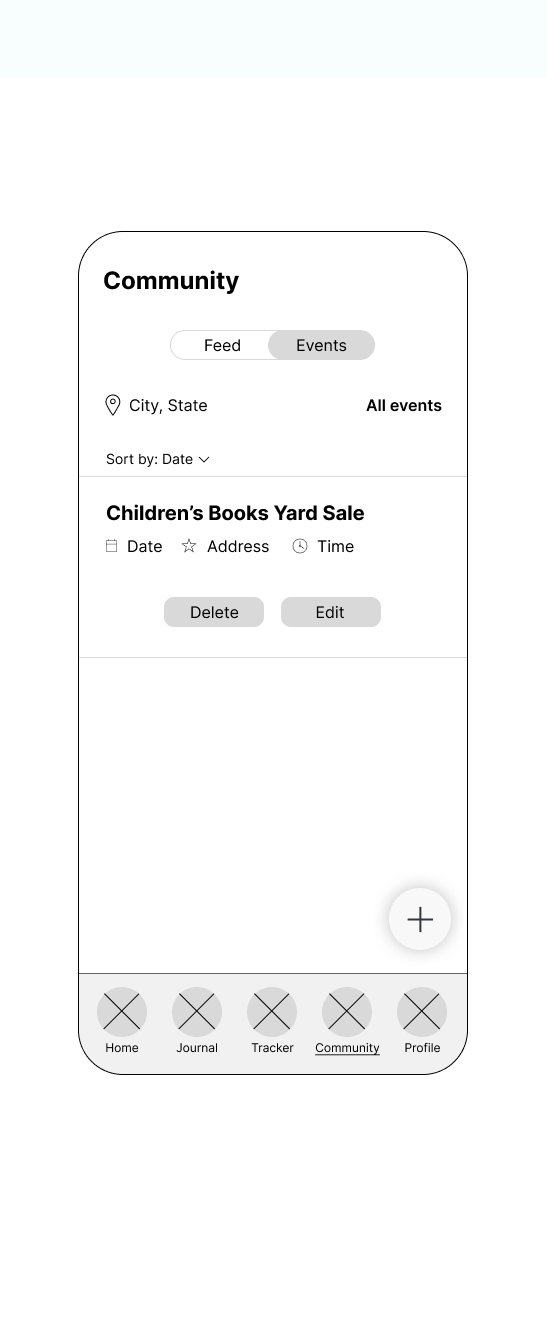
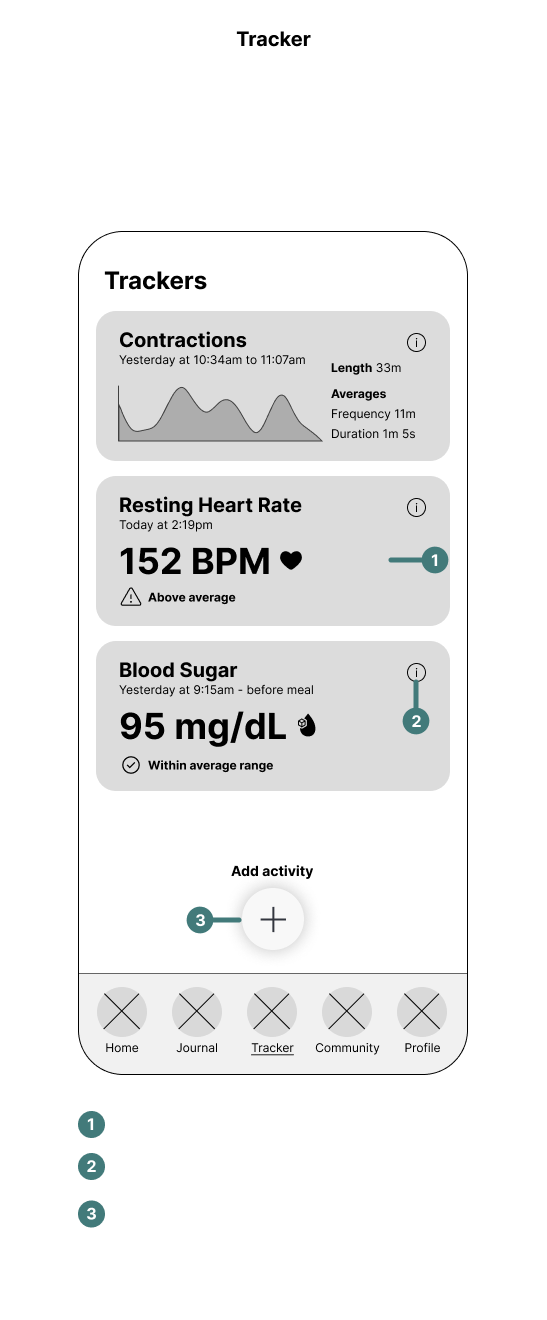
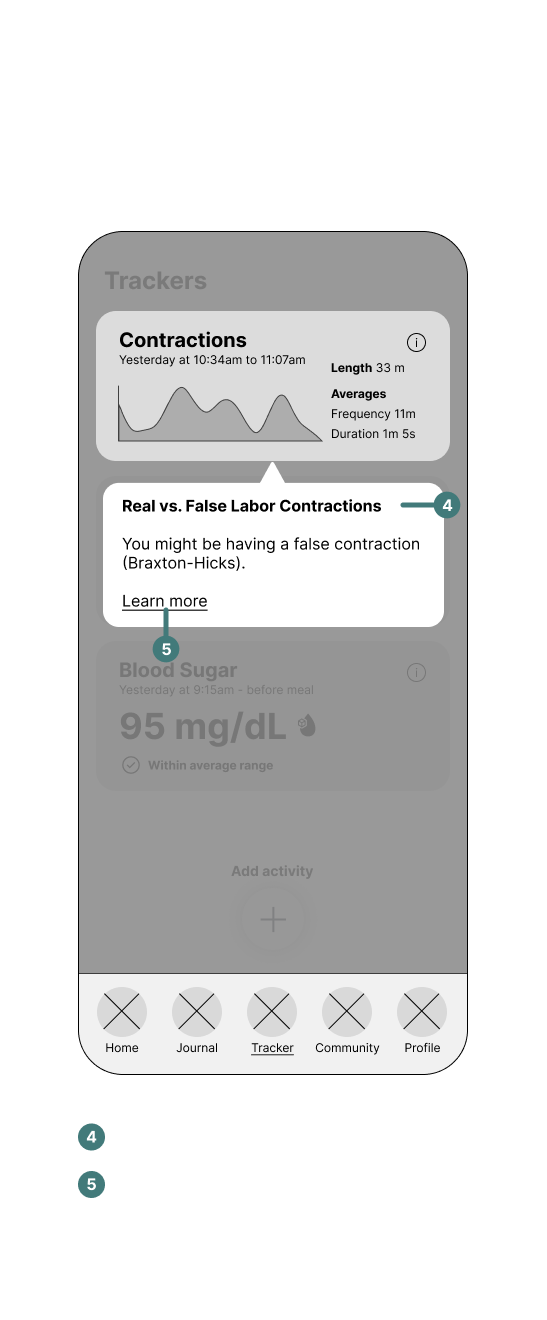
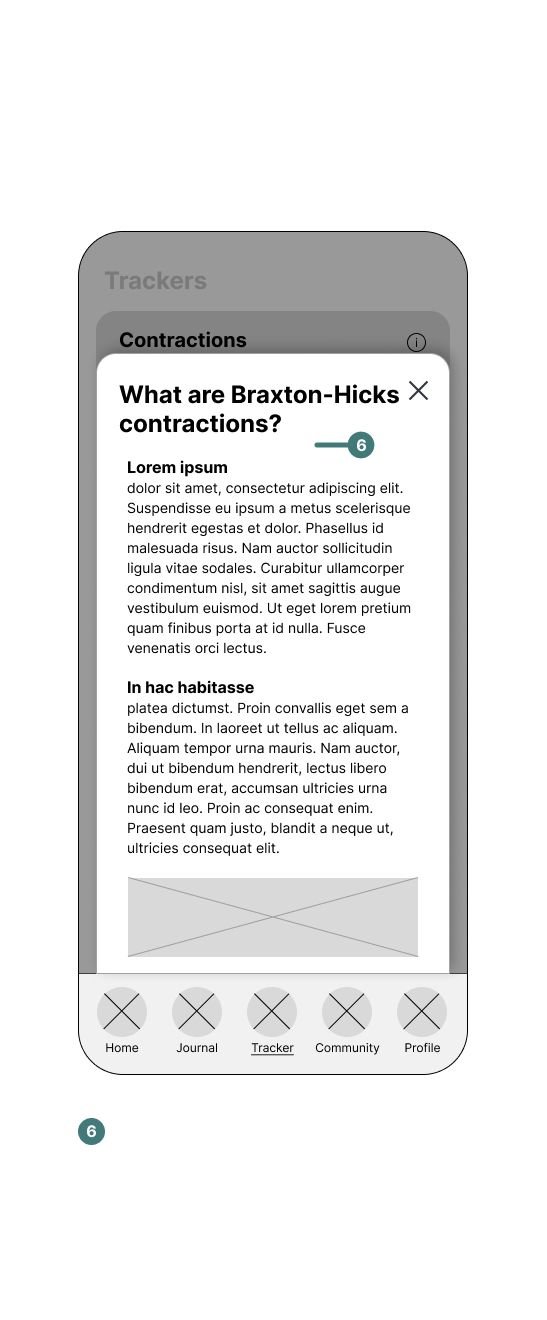
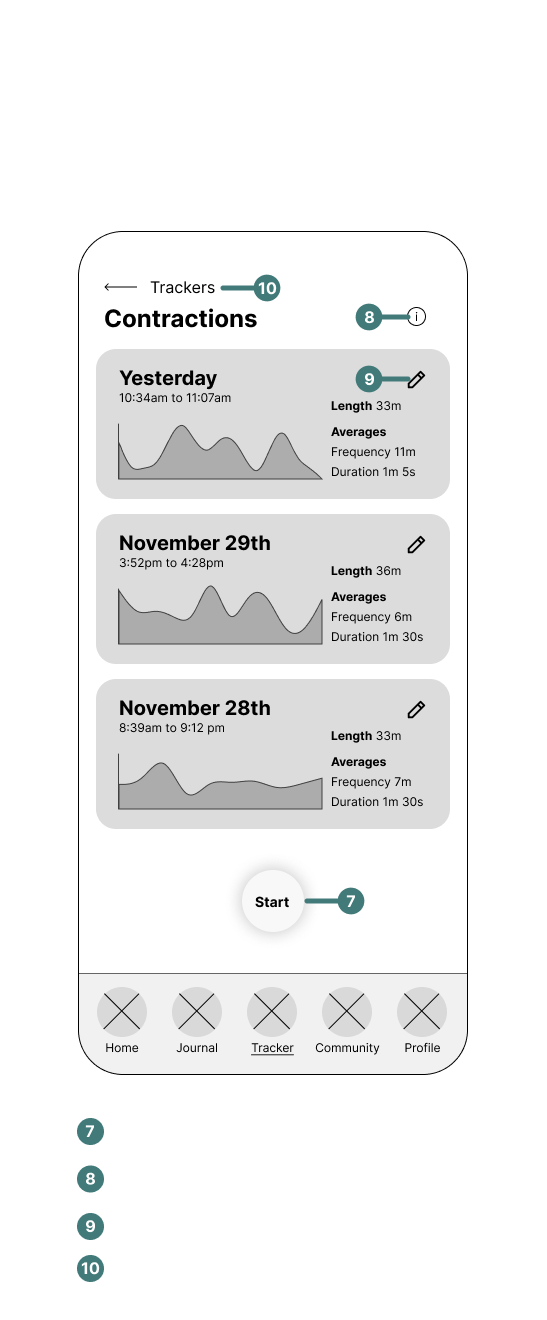
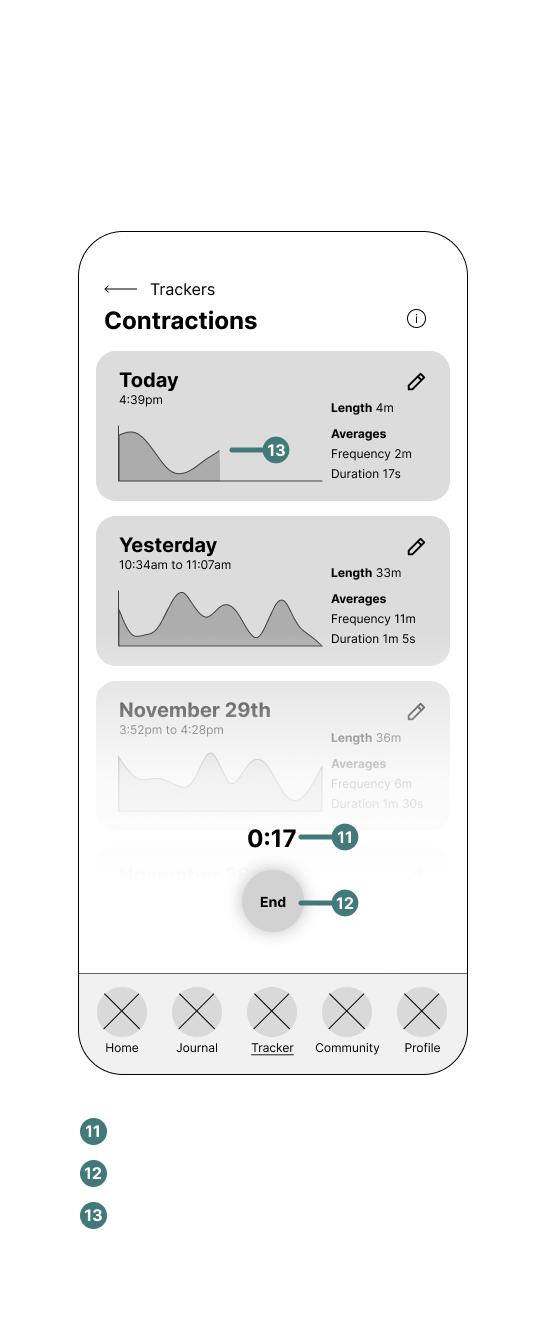
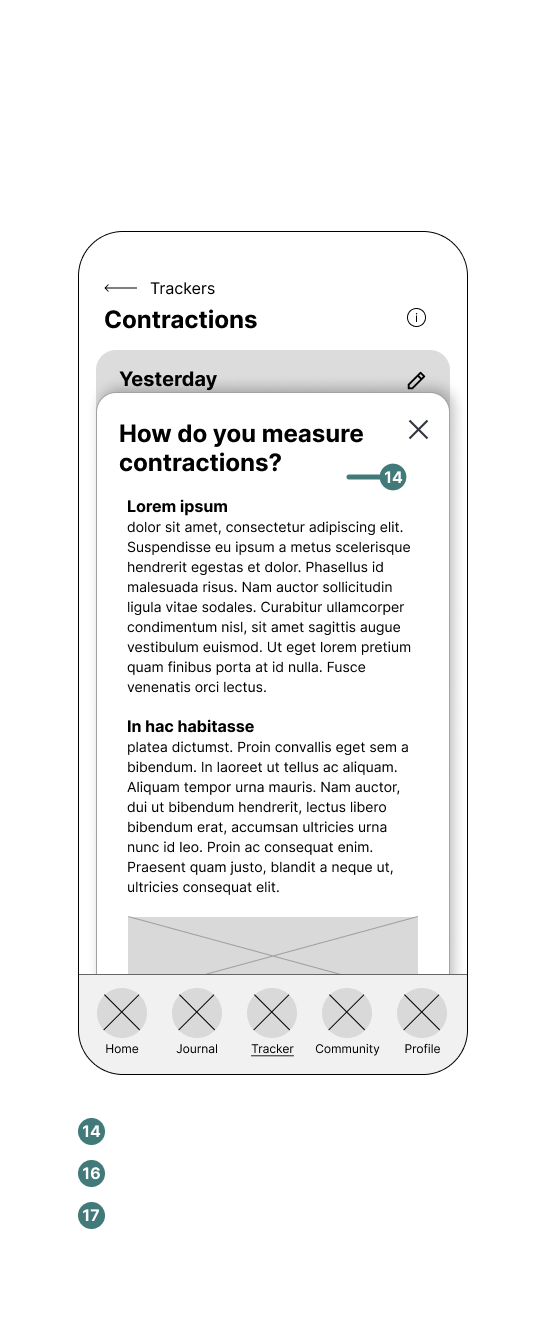
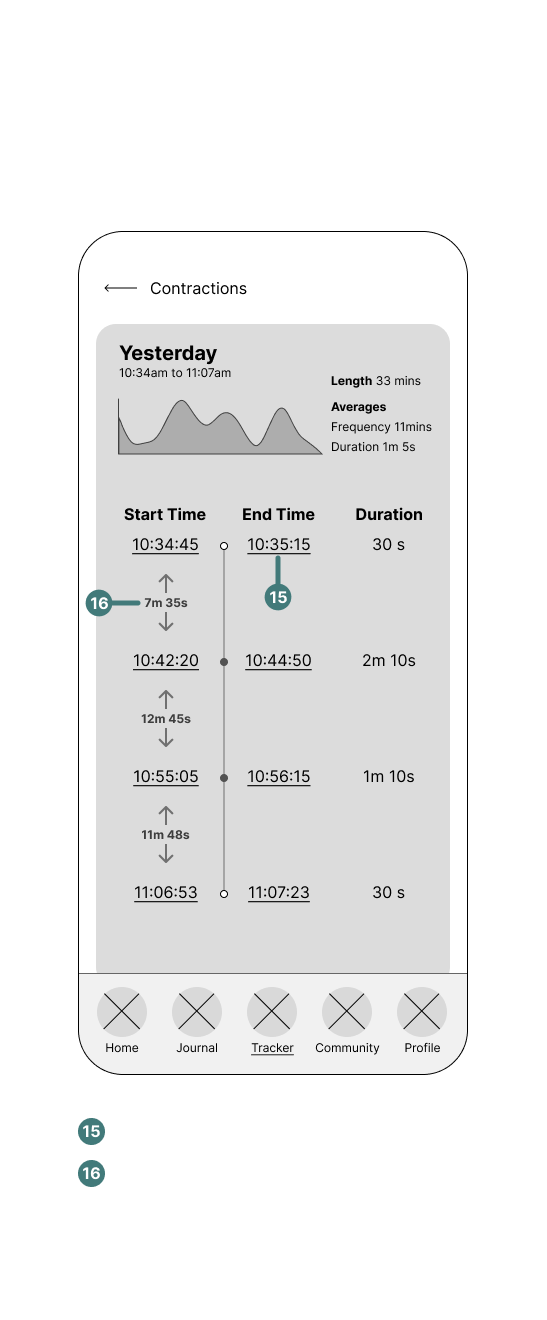
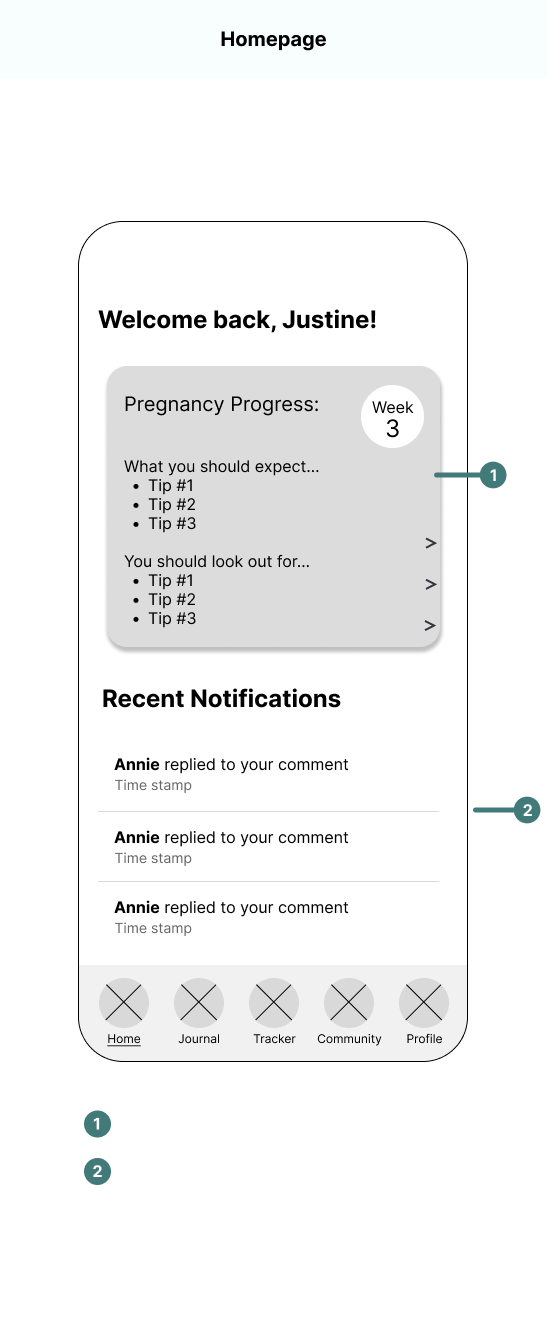
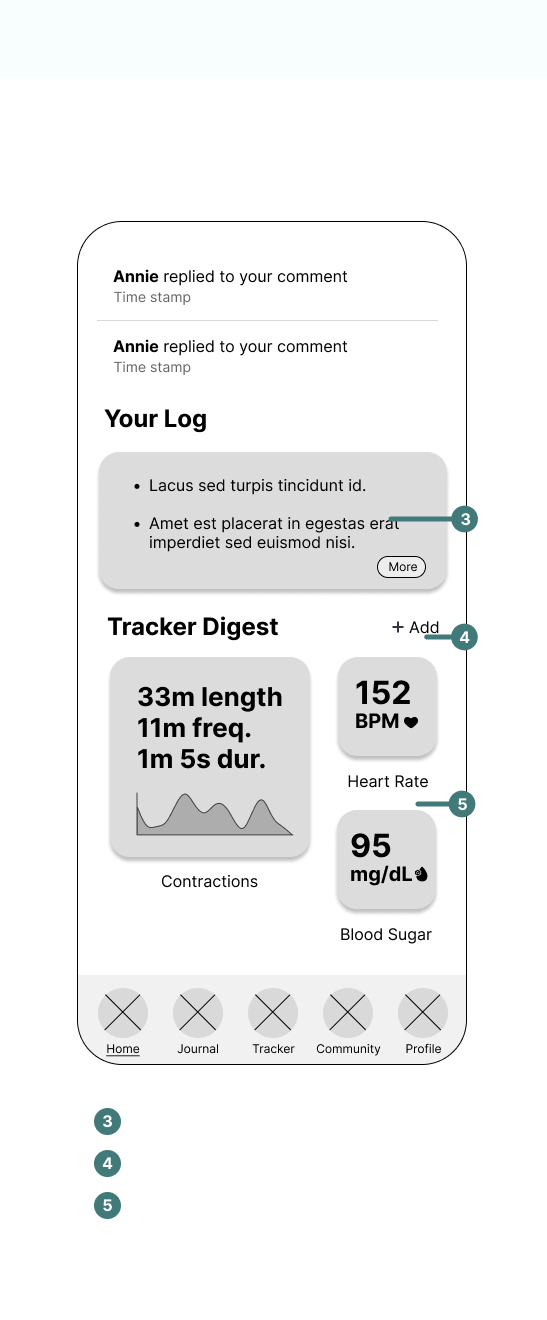
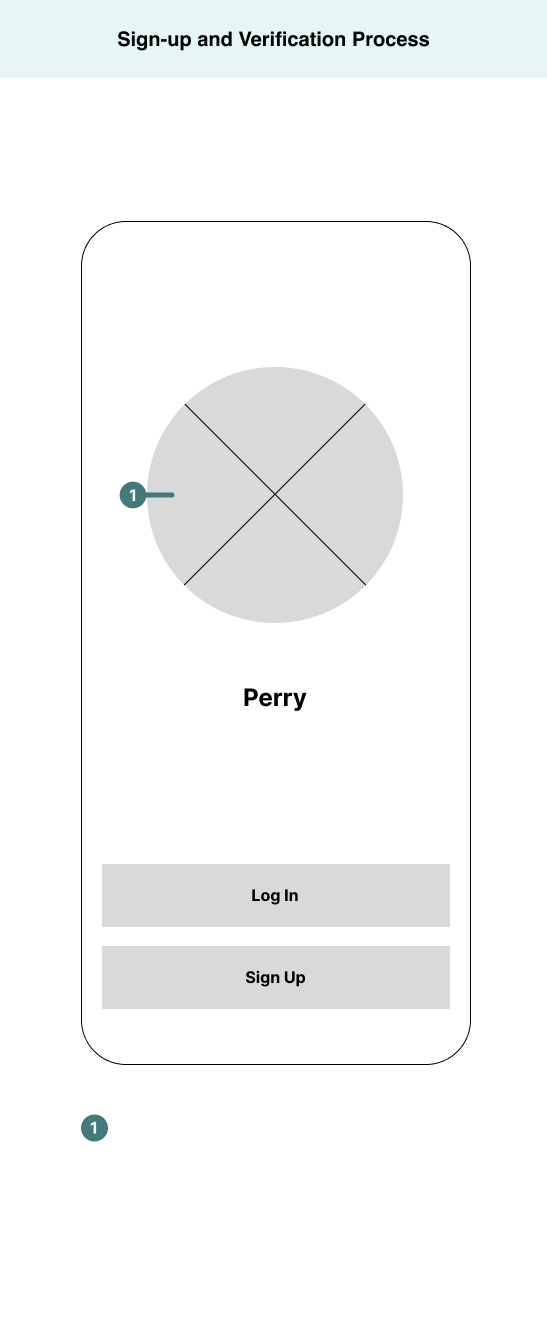
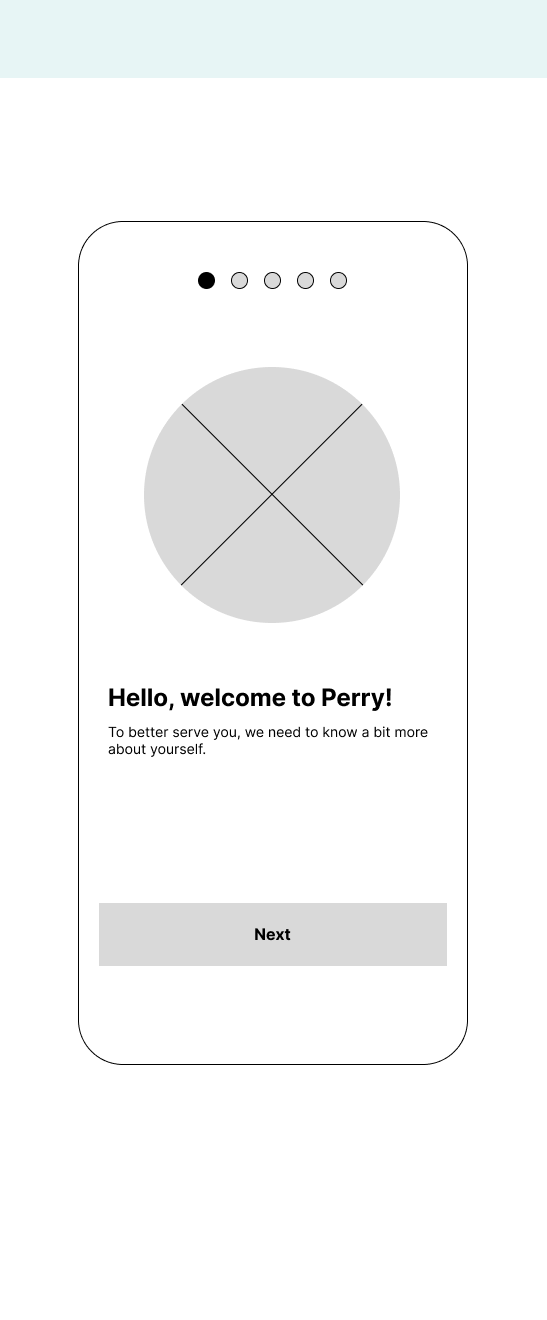
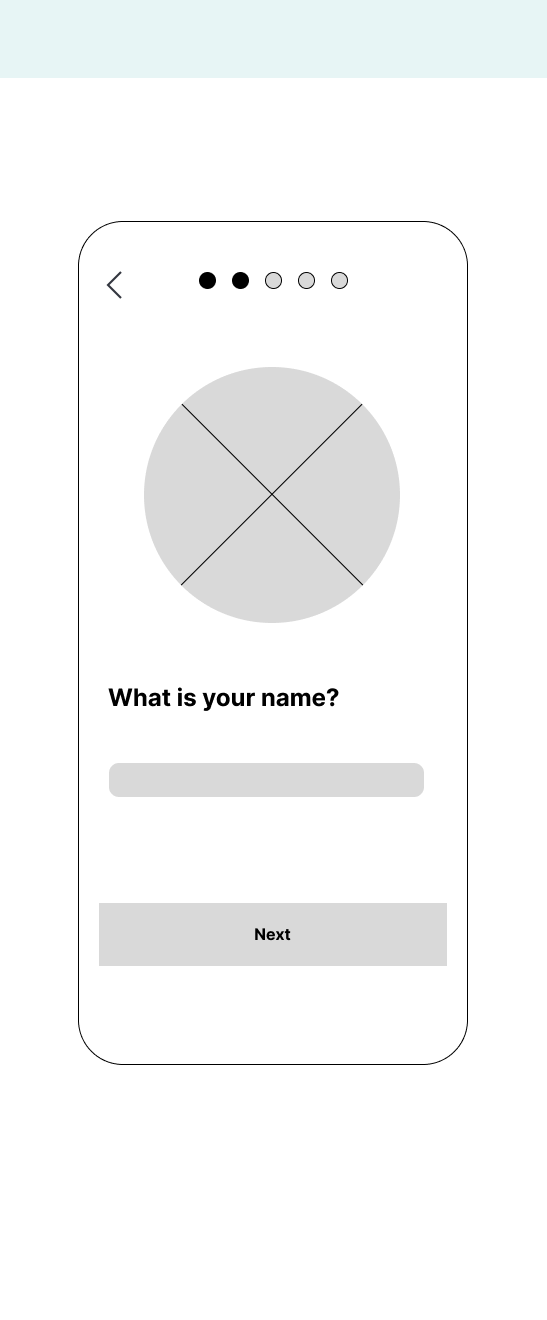

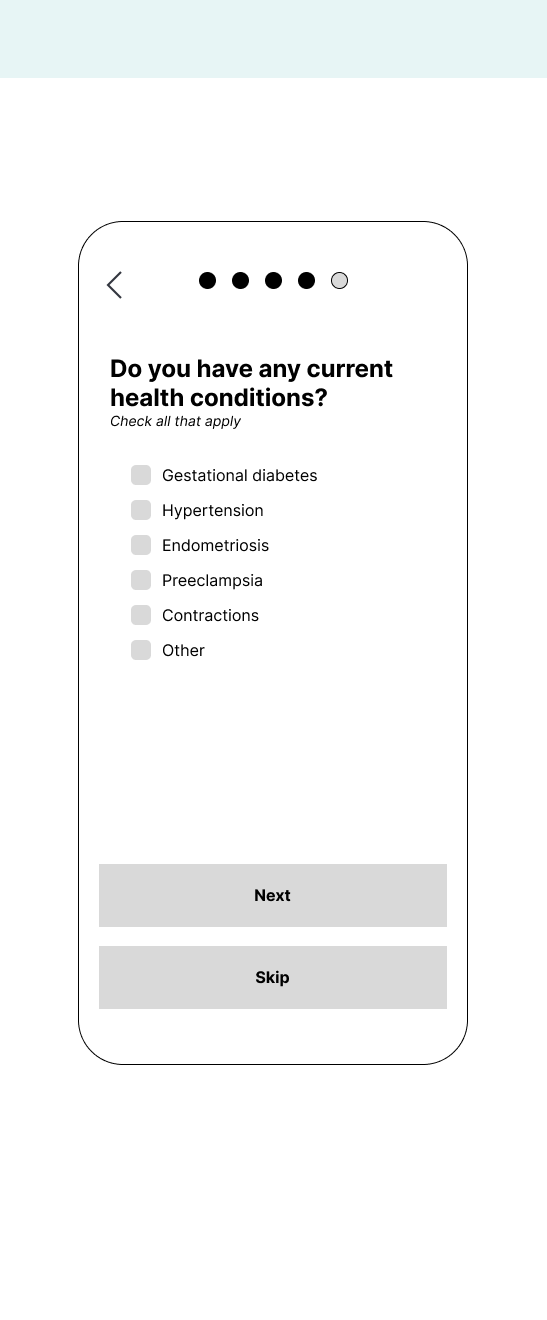
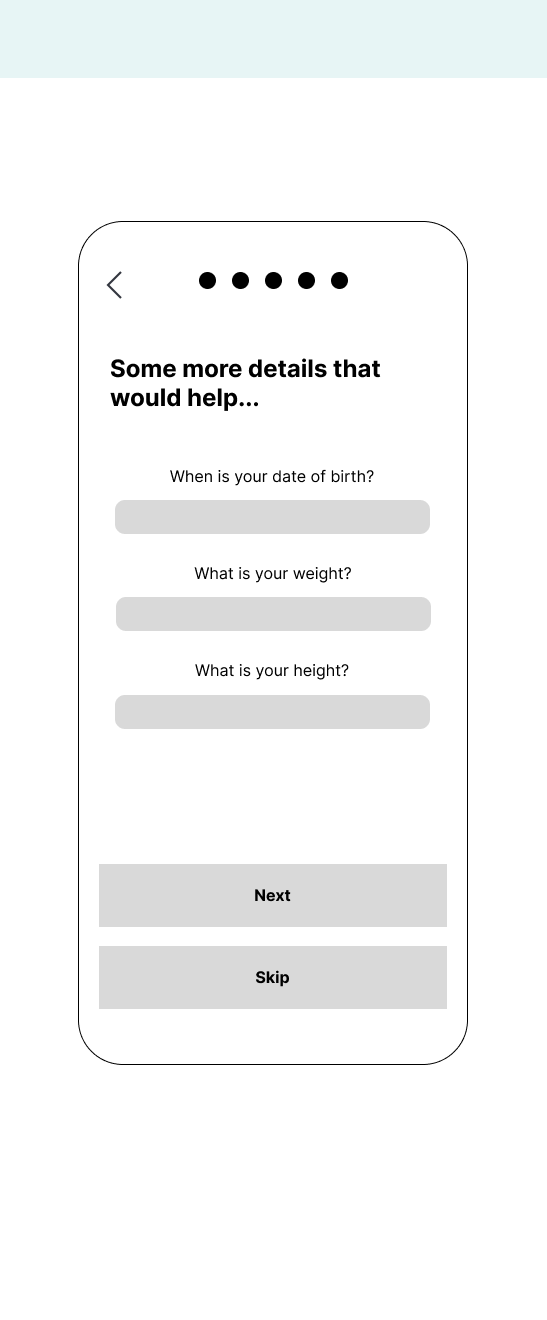
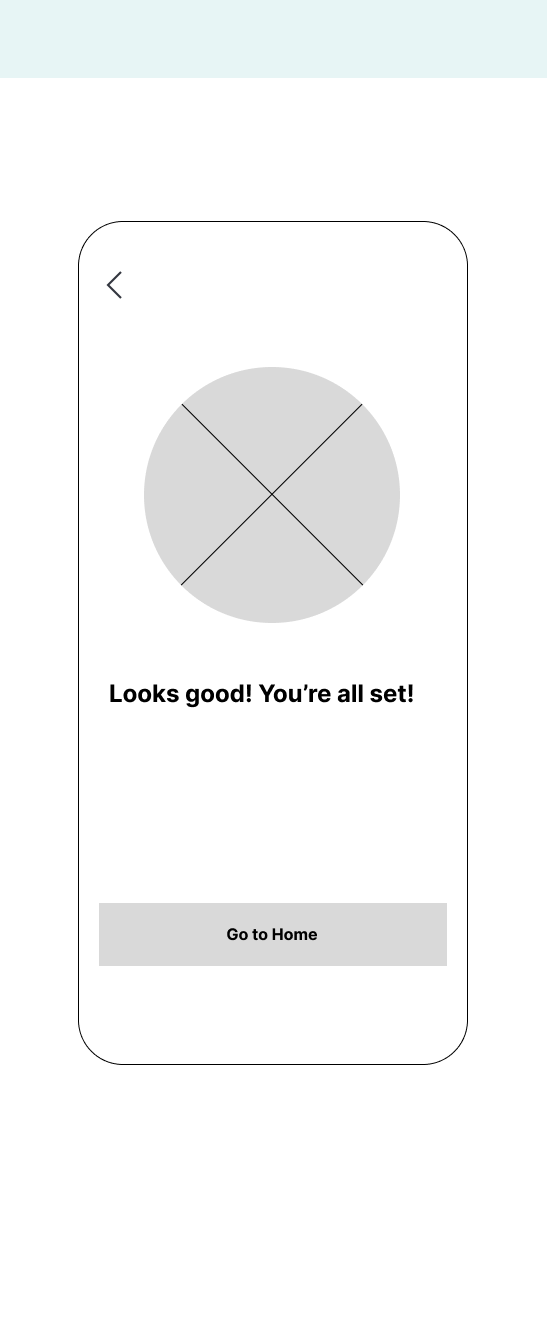

💡Round Two
Our team has successfully advanced to the next phase of the competition, presenting us with the exciting opportunity to further refine and enhance Perry. I had to go back and ask - did we answer the research question?
“Between poor perinatal health, lack of education, and impersonal medical care, there is a demonstrated gap in reliable support for people experiencing pregnancy.”
Driving the Process with Feedback
I aimed to ensure that the feedback from the judges and our coach, Dr. Mike Rayo, would be the cornerstone guiding our project into its next phase. Here's the feedback that was received:
Refocusing on Marginalized Pregnant People: Work on how Perry can better support its target audience of marginalized pregnant individuals.
Advocacy and Promotion: Consider strategies for advocating and promoting this app within marginalized communities.
Expanding User Research: Conduct more interviews and initiate usability testing to gather broader user insights.
Adding New Features: Think about including additional features, such as language settings, to enhance accessibility.
Integrating Advice from Healthcare Providers: Explore ways to share and gather relevant information from the healthcare team, considering alternatives to current methods.
Personalizing Information: Determine how the app can be used to collect specific information addressing individual concerns.
My Thoughts on the Potential Impact of Perry
I envision the research on perinatal health, awareness, and education, along with the creation of Perry, having an impact in several areas:









